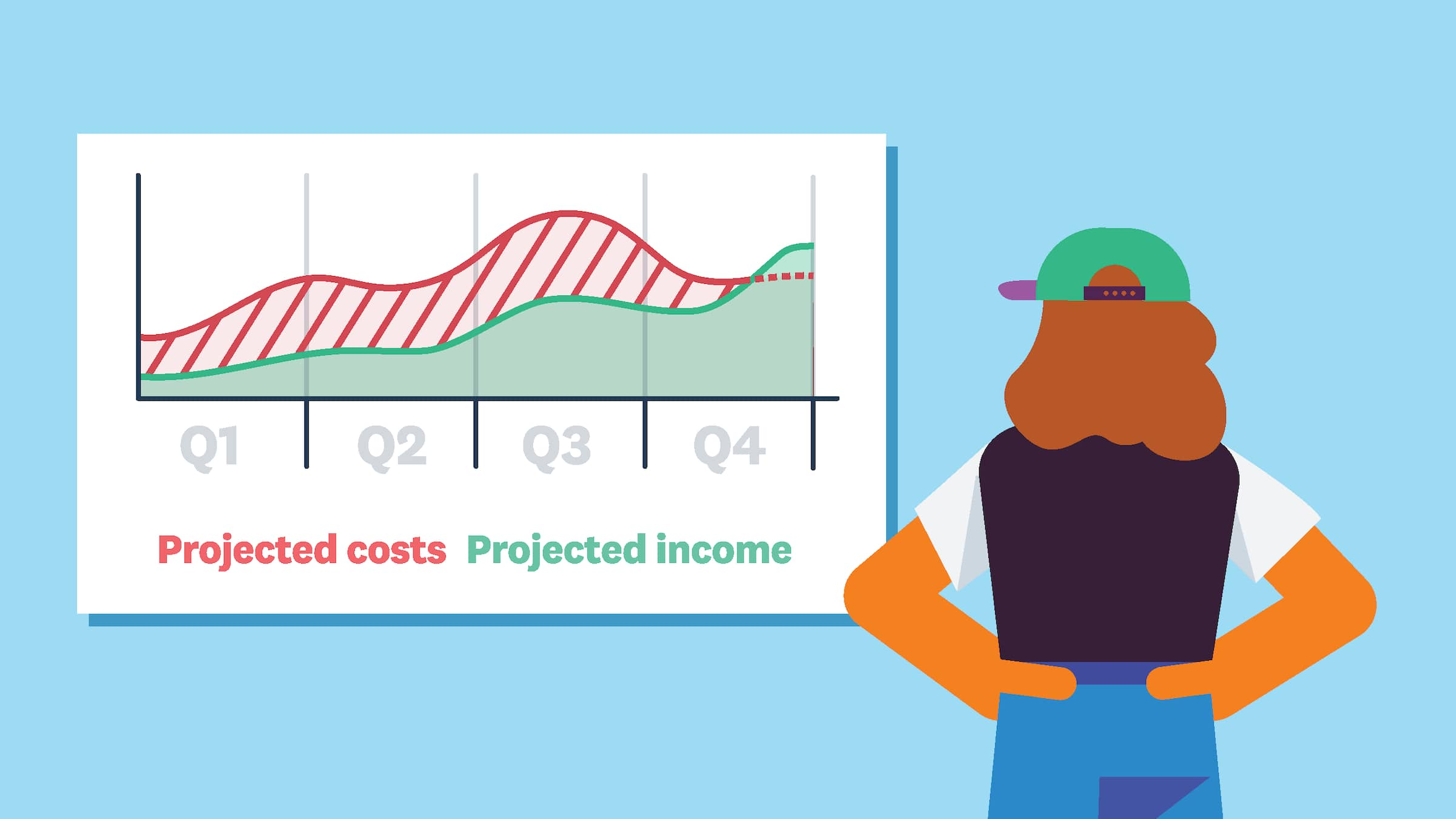Small business budgeting and forecasting
It’s time to run some numbers on your business idea. Budgeting and forecasting help with that.

Published Tuesday 20 July 2021
What is a budget?
A budget predicts how much money will come and go from your business over a period of time (usually a year). Budgeting and forecasting help startups see if they can afford to start a business – and if it will repay all their hard work with a return on their effort.
The purpose of a budget
Budgets predict the money-making potential of a business, but they also tell you things like:
- how much it will cost to start up
- whether you’ll need to borrow money
- what you need to charge customers
- if you can afford staff
How to make a budget
Start off by listing your costs and note roughly when they’ll hit. The timing is important to small business budgeting because it affects your cash flow. Do the same for income.
Budgeting is so nice, you ought to do it twice
Make a budget that assumes a solid first year, and another that assumes a slow start. That second budget won’t be so much fun to create, but you’ll be glad to have it up your sleeve if things don’t take off. Bank managers and investors will also want to see two budgets.
Small business budgeting mistakes to avoid
- Don’t forget to deduct sales and income tax from sales revenue
- Some jobs go wrong, and some inventory gets broken so build in contingencies
- Remember to calculate how much interest you’ll pay on loans
- Factor in costs to insure your business against liabilities and disasters
- Put money aside to cover depreciation of assets like work tools (because you’ll have to replace them eventually)
Reduce financial risk by validating your business idea first. For example, you could open a pop-up store first, instead of paying for the fit-out of a retail store.
Creating a financial plan for your business
Try not to freak out about this red part of the graph.
That’s just part of being a startup and will appear in most small business budgets. It will take time for customers to find and trust you, so sales will be slow in the beginning. Meanwhile you’ll have a lot of set-up costs to contend with.
Include a section in your business plan on how you’ll make up the difference. Will you dip into personal savings? pitch investors? go to the bank? or turn to family and friends?
The difference between a budget and a forecast
Budgeting and forecasting are often treated the same, but there are important differences. Small business budgeting shows how you expect the business to perform over a given period. Forecasts use real-life sales and cost data to show where things are actually headed.
It’s important to not only budget for costs that occur monthly, but also the costs that happen once or twice a year. Don't get surprised by a big lump sum insurance payment, for example.
For obvious reasons, you want to know if the two are seriously out of whack. So check your budget against actual business numbers regularly. That way you can fix problems before they get too big, and spot opportunities before they’re missed. Plus the exercise will help you get better at estimating costs and income for the years ahead. Small business budgeting and forecasting go hand in hand.
Get help from an accountant or bookkeeper
Accountants and bookkeepers work with small businesses all day, every day. They can help get your numbers right. Find one in the Xero advisor directory.
Disclaimer
Xero does not provide accounting, tax, business or legal advice. This guide has been provided for information purposes only. You should consult your own professional advisors for advice directly relating to your business or before taking action in relation to any of the content provided.
Download the guide to starting a business
Learn how to start a business, from ideation to launch. Fill out the form to receive this guide as a PDF.
Now that you have your guide
Managing finances can feel overwhelming. With Xero’s powerful tools, small businesses can stay organized and confident.
1. Research your idea
Your business idea is clearly inspired. But it helps to check you’re not the only one who thinks so.
2. Write a business plan
It helps to map your way from having a genius idea to a real business. Your plans don’t even have to be long.
3. Do a budget
You’ll need a rough financial plan so let’s estimate costs vs. sales, and figure out your break-even point.
4. Set prices
Work out what you need to charge to cover costs. And choose a pricing strategy that works for your business.
5. Choose a business structure
Will you be a sole proprietor, a partnership, or a company? And what's the difference anyway?
6. Sort your startup accounting
Get a few things right at the start and you’ll be sweet when it comes to tax time. Let’s demystify accounting.
7. Register your business
Find out who you have to tell about your business. And check to see if your industry is regulated.
8. Create a website
Learn what goes into a website. It’s simple and a great way to get discovered.
9. Get extra support
Once you’ve learned how to start a business, you’ll want help running it. Check Xero’s guides and templates.
10. What starting a business looks like
A Xero survey of 1,000 North American startups reveals why and how they started their businesses.